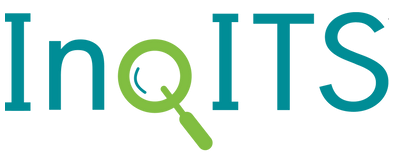By Rebecca Griffiths

Inq-ITS (Inquiry Intelligent Tutoring System) is an online educational environment for science, providing NGSS-aligned virtual labs that lead students through an authentic inquiry experience. As students work, Inq-ITS’s algorithms automatically assess students and generate reports on classroom-wide and student-specific performance for educators. The system also provides real-time support for students through an AI-based virtual tutor and notifications and prompts for teachers. Inq-ITS was founded by university-based researchers with support from the U.S. Department of Education and National Science Foundation.
Using Research to Address the New Needs of Science Teachers

Janice Gobert, CEO / Co-Founder of Inq-ITS.
The Next Generation Science Standards (NGSS) ushered in new expectations for how K–12 students should learn science, with a focus on inquiry and lab experiences. A team of researchers formerly at Worcester Polytechnic Institute spotted an opportunity to develop new tools and resources for teachers, who often had minimal preparation or resources for addressing these standards or meeting new assessment requirements.
The Inq-ITS team reasoned that assessing and monitoring students doing authentic science tasks, as required by NGSS, would require both richer forms of assessment and personalized support. Teachers also needed tools to guide instruction on the fly. To meet this need, the team launched Inq-ITS (Inquiry Intelligent Tutoring System), an AI-based science platform. What began as a grant-funded research project has grown into a robust product and has engaged students to complete over 1.6 million online labs to date.

Rex is a built-in AI tutor.
Unlike science assessment products that rely on multiple choice questions, Inq-ITS has science virtual labs that have been designed and structured to help students learn authentic scientific practices. Students form questions, collect data to test these with simulations, analyze their data, do the relevant mathematics, and then write up their claims with supporting evidence. The platform automatically scores students’ competencies at these and other scientific practices and has a built-in AI tutor named Rex who provides targeted support when the AI detects that the student needs support. Inq-ITS also features a real-time monitoring dashboard for teachers that identifies which students are struggling and how, and it provides specific research-based prompts to help them give guidance to students.

Michael Sao Pedro, CTO / Co-Founder of Inq-ITS.
The product evolved organically. Co-Founder and Chief Executive Officer Janice Gobert drew on her decades of experience as a cognitive scientist examining usage data generated by students interacting with online systems. She sees these data as a window into users’ strategic decisions and inquiry processes. Gobert and Chief Technology Officer Mike Sao Pedro, then a doctoral student with Gobert, started by creating a set of labs and assessment algorithms and tested them with students from different demographic groups.
At first, the Inq-ITS team didn’t have a product that could assess and scaffold the full gamut of science practices. Sao Pedro explained: “There’s all this non-research work that needs to be done to get [the system] ready to use in classrooms and, in turn, scale. We didn’t have all the necessary components. Our first customers had to be interested enough in Inq-ITS to use what was ready and be willing to overcome some of the things that weren’t ready.”
The team had to be very scrappy to set priorities and build the software. It was important to distinguish what was critical vs. what was nice to have and could be added in the future. Based on teachers’ use of the early versions of the system, they identified the need for an LMS that allows teachers to find and assign labs, assess students’ scientific competencies, and manage their workflow.
— Michael Sao Pedro
The Inq-ITS founders also needed to keep an open mind about the market for their emerging product. They initially saw middle school as their primary target, but their first two sales came from a high school whose students needed remediation support; among the first sales was also a fifth-grade class whose students needed more advanced science. Importantly, these early adopters were willing to try a product that lacked some features that a typical tech program would have.
Advancing Equity with a Disruptive Solution
According to Sao Pedro, the Inq-ITS team focused on equity from the start. In the early days, they piloted the system in under-resourced schools and with students performing below grade level to make sure the materials would work for them. Gobert noted that some of the typical indicators teachers use to assess students, such as their writing, can lead teachers to underestimate students’ scientific competencies—especially for multilingual learners. This is a very important equity issue, added Gobert.
Inq-ITS seeks to correct for this bias by using AI to generate real-time assessments of students’ competencies aligned to the NGSS; the system auto-assesses students’ competencies using a wide-variety of data sources, from mouse-clicks (log files) to widgets and open-text boxes. Students are assessed and scaffolded on science practices, such as forming questions, collecting data to test these questions, analyzing data both with and without their corresponding mathematics, and describing their findings (i.e., evidence) in writing.

Cameron Betts,
Managing Director / Co-Founder of Inq-ITS.
Co-Founder and Managing Director Cameron Betts posited that new products are either evolutionary or disruptive. Evolutionary products offer incremental improvement over existing solutions. But to disrupt existing systems and structures, a product needs to be innovative and solve an existing problem for teachers and students. It needs to be highly usable and convenient, and teachers need to see these benefits right away or they’re not likely to adopt the product. Betts sees Inq-ITS as following a disruptive path by introducing a new way of both assessing and teaching science that provides more support for teachers and requires very little training. Inq-ITS has the potential to support less seasoned science teachers and thus democratize access to science through high-quality feedback provided by the teacher (or by Rex).
Assembling an Entrepreneurial Team
Gobert noted that most young companies fail for two reasons: They run out of money or the co-founders stop getting along. The three Inq-ITS co-founders avoid the second pitfall by being clear about their goals and motivations and what each is willing (or not willing) to do for these goals. This clarity is especially important because school-based innovations can be slow to take off. As Gobert said: “You’re trying to provide an innovative product that needs to work within a mostly outdated ecosystem that you’re trying to change at the same time!”
The co-founders brought complementary skill sets. Sao Pedro was trained as a computer scientist. He developed AI software for a defense contractor before undertaking his studies in a doctoral program at Worcester Polytechnic Institute. While there, he worked with Gobert, then a professor at the institute, on research projects that were the kernel for Inq-ITS. Betts, also a graduate student with Gobert, joined the team a little later. His earlier career as an information architect and lead designer for financial firms had given him a foundation in user interface and product design that helped to design the interface for Inq-ITS and its dashboard.
All three co-founders agreed that Betts’ and Sao Pedro’s private sector experience was valuable in productizing and scaling Inq-ITS. Two of the three co-founders working full time on the company has brought a critical level of focused energy and attention.
Building a Customer Base
Early marketing efforts focused on science teacher conferences. The Inq-ITS team used these events to build awareness and recruit early adopters to get feedback, hear pain points, and learn what critics might say. Having lots of these conversations helped them develop marketing materials and preempt any naysayers. They also tried appearing at ed tech conferences but found that these events typically generated too few leads to justify their cost.
The team also pitched their product at the district level, often to science supervisors, starting with states that were early adopters of the NGSS. They worked with boards of cooperative educational services (BOCES) that were interested in products to support science education. The team started in nearby states on the East Coast, where it was easier to provide support, and spent months on the road making pitches in other parts of the country—what Sao Pedro refers to as a “spray and pray” approach. They attended small science conferences where few vendors go, making it easier to stand out.
– Angela Marksberry, Henderson, Kentucky, 2018 Kentucky Science Teacher Award Winner
A key strategy was to have teachers present on behalf of Inq-ITS. Sao Pedro said: “There’s nothing more powerful than having a teacher talk about what they’ve done with what you’ve built… It’s so much more authentic to hear it from actual teachers.” Gobert quoted an early champion from Kentucky, one of the first states to adopt the NGSS, who has been a long-time Inq-ITS user and advocate: “My students have learned so much about the science process from this program! When we write claim, evidence, and reasoning in the classroom they now automatically look for the data thanks to Inq-ITS.” (Angela Marksberry, Henderson, Kentucky, 2018 Kentucky Science Teacher Award Winner).
An important inflection point for the company, Betts said, was the COVID-19 pandemic, when the team gave all teachers worldwide free access to Inq-ITS. This led to positive learning gains for students using the product at home, including those who were at risk of falling behind. The team was able to align Inq-ITS not only to the rollout of the NGSS, but also to the growth of online and blended learning caused by the pandemic, the switch to digital learning resources, and the timely buzz around AI in education.
Establishing a Revenue Model and Transition Pathway
The development of Inq-ITS was initially funded through National Science Foundation and Institute of Education Sciences grants, entrepreneurship awards, and smaller awards, such as one from Microsoft. Small Business Innovation Research funds were instrumental for commercializing the research into a product. The co-founders received seed money from friends and family and also invested their own resources, demonstrating their conviction and commitment to the company’s success. However, the team needed funds from other sources to scale up the technical infrastructure. As Betts stated: “Being based on grants is fragile, insecure, and unreliable… grants are good until the path ends.” Ultimately, they needed to generate operating revenue in order to grow.
The Inq-ITS team experimented with several pricing models. First, they offered the whole system—including the labs and the dashboard—for a set price. They realized, though, that not all teachers need all the labs, so they offered a six-pack of labs at a lower price, with the LMS priced separately. Then they decided to provide the LMS for free so that teachers could try the system out and only charge for the labs. Now the team offers a per-student yearly subscription model that gives customers a range of options for labs and have added teacher professional development as a service.
According to Betts, the path to success for most ed tech start-ups is to become part of a larger company. Companies that aim to be acquired typically need to first prove their market appeal through direct sales and an established revenue stream or a big user base.
As for accelerating growth and impact, Sao Pedro sees partnership as the most efficient approach. He cautioned that Inq-ITS has a particular theoretical underpinning aligned with deep learning of authentic science, so finding the right partner is key to making sure their product’s impact doesn’t get diluted. He sees their preferred model as outsourcing distribution to a partner while keeping product development within their core team.
Key Takeaways
- Target new needs and opportunities created by changes in standards. Inq-ITS was designed to help teachers address NGSS with an AI-based science platform.
- Conduct iterative field testing to understand the user need and use cases. Initially a grant-funded research project, Inq-ITS evolved into a robust product through extensive user testing and feedback, homing in on the value proposition for science teachers and their students.
- Use technology to reduce assessment bias and strengthen teachers. The team emphasized equity with initial piloting in under-resourced schools and by using AI to develop valid, generalizable algorithms, thereby reducing risk of bias. Inq-ITS aims to democratize access to science by supporting all teachers, including less seasoned science teachers in providing high-quality feedback so that all students, including those who are at risk of falling behind in STEM, can improve at doing authentic scientific work.
- Assemble an effective team with focused and committed leadership. The co-founders’ complementary skills sets and dedication to the project have been key success factors. The team prioritized hiring full-time software developers.
- Try out targeted marketing efforts and recruit champion users: Effective marketing strategies included attending science teacher conferences; targeting pitches at the district level, starting with early adopters of NGSS, and recruiting champion teachers to present on behalf of Inq-ITS.
- Iterate toward a sustainable revenue model: Inq-ITS recognized a need to generate operative revenue to reduce reliance on grants and experimented with pricing models, leading to a per-student yearly subscription.
- Explore distribution partnerships to drive growth: The Inq-ITS team saw distribution partnerships as an efficient approach for accelerating growth and impact but emphasized the need to maintain the products’ impact.

Published April 2024.
